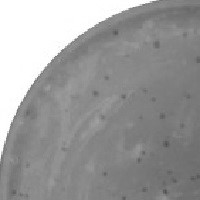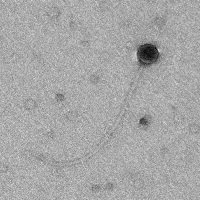Gordonia phage Aiya
Know something about this phage that we don't? Modify its data.
| Detailed Information for Phage Aiya | |
| Discovery Information | |
| Isolation Host | Gordonia terrae 3612 |
| Found By | Hilary Liu |
| Year Found | 2018 |
| Location Found | Pittsburgh, PA USA |
| Finding Institution | University of Pittsburgh |
| Program | Science Education Alliance-Phage Hunters Advancing Genomics and Evolutionary Science |
| From enriched soil sample? | No |
| Isolation Temperature | 23°C |
| GPS Coordinates | 40.445599 N, 79.962766 W Map |
| Discovery Notes | Time: 9/1/18 6:31 PM Location: flower bed near Sutherland West (40.445599..., -79.962766...) Conditions: soil was dark, coarse, and cool; under the shade; weather was clear, slightly cloudy ~75 degrees F; soil collected from flower bed with no vegetation over this particular patch Storage: because soil sample was taken from Sutherland, minimal transport time from sample collection spot and refrigerator; the soil sample was put in the fridge about 10 min after collection and stored there for three days until SEA-PHAGES lab |
| Naming Notes | "Aiya" is an exclamatory remark in Mandarin Chinese, applicable to any situation (frustration, annoyance, anger, surprise, happiness); an often-used phrase during research of this bacteriophage |
| Sequencing Information | |
| Sequencing Complete? | No |
| Sequencing Facility | Pittsburgh Bacteriophage Institute |
| Genome length (bp) | Unknown |
| Character of genome ends | Unknown |
| Fasta file available? | No |
| Characterization | |
| Cluster | Unclustered |
| Subcluster | -- |
| Lysogeny Notes | To test for the potential formation of a lysogen, Aiya was plated on PYCa plates with 1X top agar and G. terrae which were then incubated for 5-7 days. If a mesa, or overgrowth of bacterial cells surrounded by the zone of clearing caused by phage infection and lysis, is present potential lysogens are streaked onto new plate with 1X top agar. Bacterial colonies from this plate are streaked onto experimental (top agar and G. terrae) and control patch assay plates (only base agar). Clearings in the of the experimental plate lawn caused by cell lysis around the patches on the experimental plate would be caused by potential lysogens. Aiya did not create very visible mesas; however, a potential mesa on spot 4 was streaked onto a new plate for a lysogen patch assay. On the experimental plate there were clearings indicative of cell lysis, indicating that Aiya has the potential to undergo lysogeny and form lysogens to infect G. terrae. |
| Annotating Institution | Unknown or unassigned |
| Annotation Status | Not sequenced |
| Plaque Notes | After direct isolation and spot test protocols, Aiya for plaque purification was grown and incubated for 2-5 days on PYCa plate with 1X top agar and G. terrae. Lytic phages generally have clear plaques, whereas lysogenic phages generally have cloudy plaques. Aiya produces clear round plaques with distinct edges that measured ½ mm in diameter. |
| Has been Phamerated? | No |
| Publication Info | |
| Uploaded to GenBank? | No |
| GenBank Accession | None yet |
| Refseq Number | None yet |
| Archiving Info | |
| Archiving status | Archived |
| SEA Lysate Titer | 2.3 x 10^10 pfu/mL |
| Pitt Freezer Box# | 89 |
| Pitt Freezer Box Grid# | F4 |
| Available Files | |
| Plaque Picture | Download |
| Restriction Digest Picture | Download |
| EM Picture | Download |

